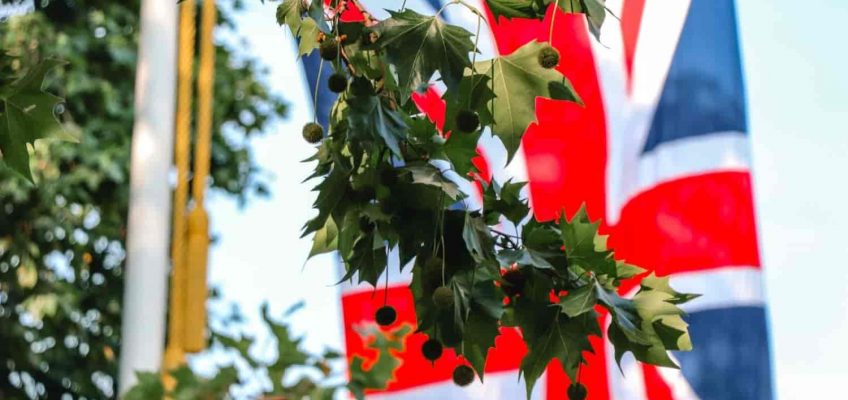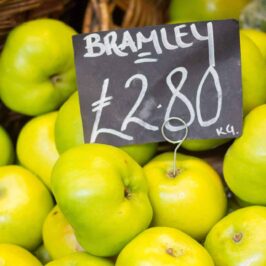England, like all other countries, has symbols that are closely associated with the nation and its history and culture. National symbols hold significant cultural and historical importance, representing the identity, values, and aspirations of a nation.
From the lions carved into London’s monuments to the red-and-white Tudor rose, these emblems tell the story of kings, battles, unity, and resilience. Some are official, like St George’s Cross or the Royal Crown, while others like the bulldog, the red telephone box, or even the humble cup of tea, have become beloved cultural icons in their own right.
These symbols embody the story of a nation and serve as powerful icons and reminders of the past.
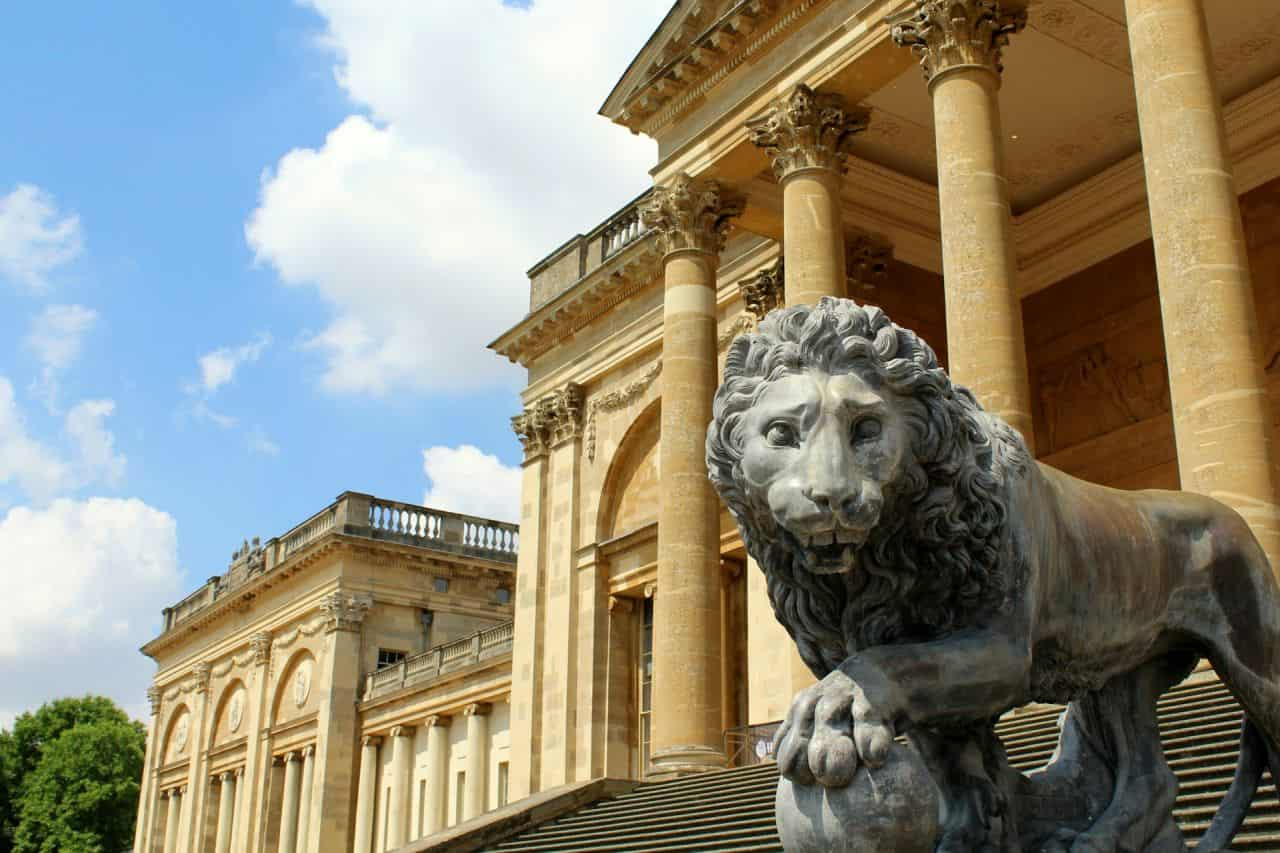
Photo by Ben Everett on Unsplash
The Lion – The national animal of England
The barbary lion is the national animal of England and the symbol can be seen on the Royal Coat of Arms.
Before William the Conqueror, the symbol of a lion was not specifically tied to English royalty but was a broader symbol of power and nobility used across Europe and beyond. (Including by the Roman legions, Babylonians, and Scythians of the ancient world.)
While William the Conqueror introduced two lions to English iconography via his banner, it was his grandson, King Henry II, who established the emblem of three lions. For political and marital reasons, creating the basis for the Royal Arms of England that is still recognised today.
Roughly a century later, during the reign of King John (1199–1216), exotic animals—including lions—are first documented at the Tower of London, marking the establishment of the royal menagerie there. It was housed in the Lion Tower near the fortress’s main western entrance, which is now the modern ticket office and gift shop.
Over the subsequent centuries, the menagerie expanded to include zebras, tigers, polar bears, owls, elephants, and many other species, often received as diplomatic gifts. However, lions remained the star attraction.
Payments to lion keepers at the Tower were first recorded in 1210 under King John, as documented in the Pipe Rolls (medieval Exchequer financial records preserved at The National Archives, UK)
In 1235, Emperor Frederick II, of the Holy Roman Empire, sent three lions to King Henry III, as gifts. Visitors flocked to see these exotic beasts, often in awe (and sometimes fear).
For centuries real lions were kept at the Tower of London as part of the royal menagerie – a living statement of the king’s power. The last lions padded out in 1835, their chains swapped for zoo enclosures.
Lion Statues and Monuments
Lions are frequently depicted in sculpture, particularly in statues and monuments, as a symbol of strength and bravery.
Walk through London today and you’ll notice lions everywhere: four famously guard Nelson’s Column in Trafalgar Square, a majestic white South Bank Lion gazes across the Thames, and countless others adorn gates, fountains, and memorials.
At the four corners of the Victoria monument are the bronze statues, with figures representing Peace (an olive branch), Progress (a flaming torch), Agriculture ( a sickle and a sheaf of corn) and Manufacture (a hammer and a scroll), with lions by their side.
Around England there are thousands of lions. From the famous lions statues to smaller decorative elements on buildings, gates, and other structures throughout the cities.
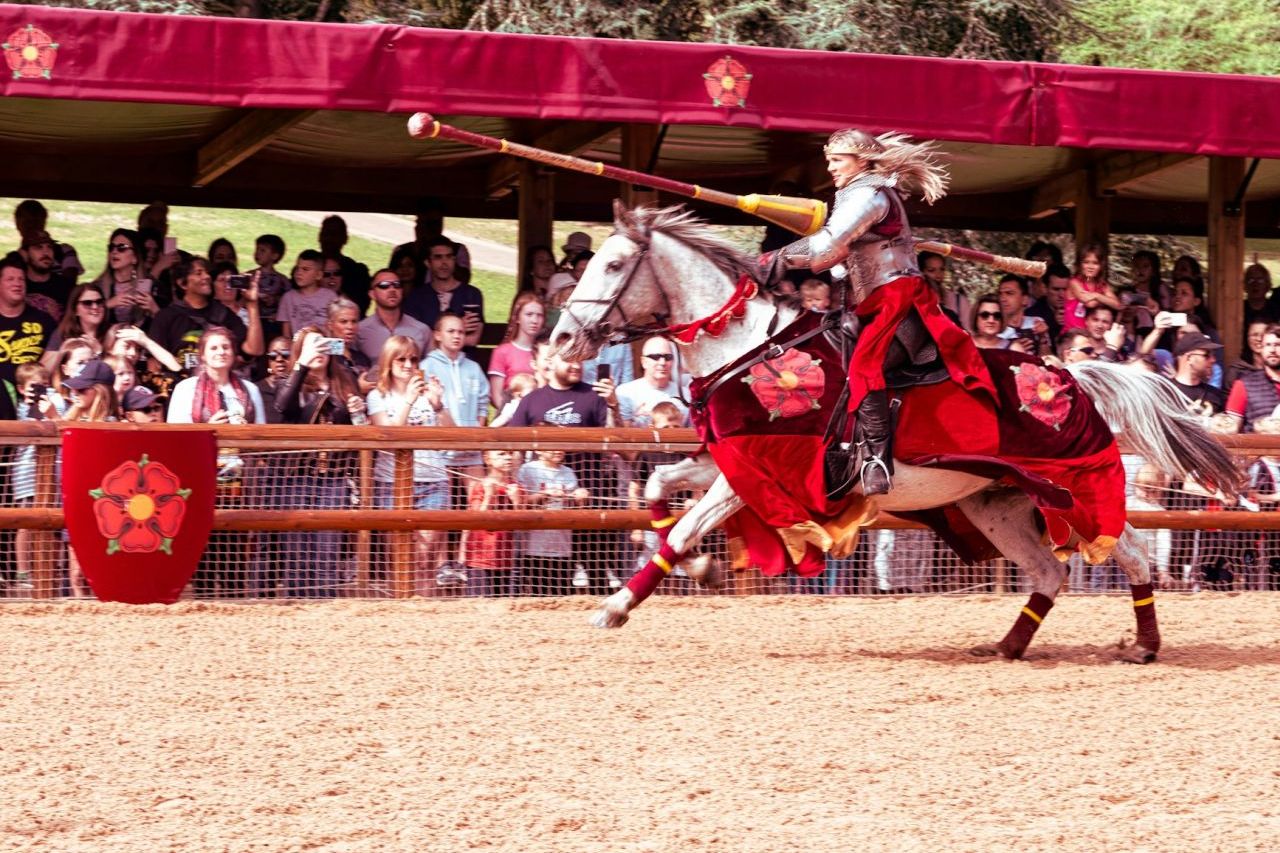
The Rose
The rose is the national flower of England and it is a symbol of the country’s history and culture. The Tudor rose is associated with the ‘Wars of the Roses’, a series of civil wars fought in the 15th century between the House of Lancaster and the House of York. This 30 year period could be compared to epic dramas like “Game of Thrones” with its complex characters, political intrigue, and brutal battles.
The red and white petals symbolise the union of the rival royal houses, ending the long period of civil conflict.
The rose remains a national emblem of England, embodying peace, unity, and the country’s heritage.
It serves as a powerful symbol of reconciliation and unity.
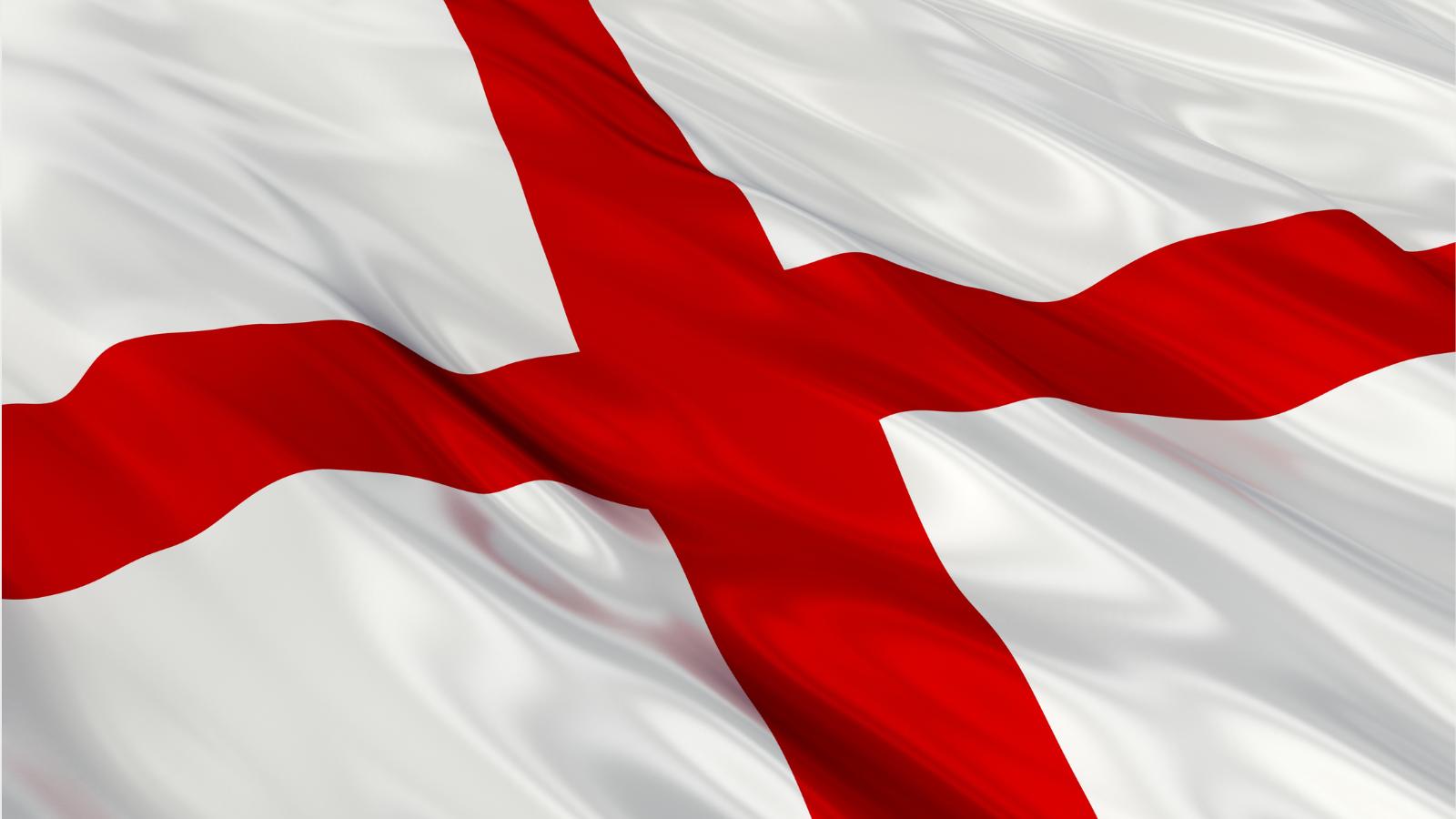
St George’s Cross
St George’s Cross, a red cross on a white background, is the national flag of England. It is associated with St George, the patron saint of England, who is celebrated for his bravery and chivalry. The cross became the official flag of England during the Middle Ages and is widely flown during national events and sporting occasions, reflecting England’s identity and Christian heritage.
The Three Lions
Perhaps no symbol is more closely tied to England’s sporting spirit than the three golden lions on a red shield. Originally, this heraldic device was adopted by Richard the Lionheart in the 12th century, combining elements from earlier Norman rulers.
Over time, the emblem passed down through monarchs and became a lasting symbol of England itself. Now, it is instantly recognisable as the badge of the England national football team, chanted in stadiums as Three Lions on a shirt a modern echo of medieval heraldry.
The Crown
The Crown is a symbol of the monarchy and it is closely associated with England. It is often featured in art, literature, and on official emblems and it is a representation of the country’s history and heritage.
The St Edward’s Crown, used at coronations since 1661, weighs over two kilograms and is adorned with nearly 450 precious stones.
The Oak tree
The oak is England’s national tree, admired for its strength, endurance, and longevity. Oaks can live for hundreds of years, often standing as silent witnesses to history.
The tree is steeped in folklore. After the Battle of Worcester in 1651, the future King Charles II famously hid in an oak tree at Boscobel House to escape Cromwell’s soldiers. Every year on 29 May ‘Royal Oak Day’ or Apple oak day– this episode was celebrated with oak leaves worn in remembrance.
From mighty forest oaks to carved wood in churches and homes, the tree remains a symbol of steadfastness and resilience – qualities long admired in the English character.
Lesser-Known English Symbols
Alongside the ‘official’ emblems, England has adopted a number of more unusual – and sometimes quirky – symbols that reflect its culture and character.
The Bulldog
Often nicknamed ‘the British bulldog spirit’, this stout, determined dog became symbolic during the Second World War as an emblem of courage, resilience, and never giving up. Political cartoonist David Low even drew Winston Churchill in bulldog form – a comparison Churchill himself rather enjoyed.
The Yeoman Warders (Beefeaters)
The Tower of London’s guardians, nicknamed Beefeaters, are one of the most recognisable English icons. Their elaborate Tudor-style uniforms make them living symbols of tradition, ceremony, and the history of the monarchy. Today, they double as tour guides, entertaining millions of visitors each year.
The Cup of Tea
It may not be enshrined on any official document, but few things are more closely tied to English identity than a cuppa. Introduced in the 17th century, tea drinking became a national obsession by the 18th.
It remains a cultural shorthand for comfort, hospitality, and calm in times of crisis – after all, ‘everything looks better after a nice cup of tea.’
The Red Telephone Box
Designed by Sir Giles Gilbert Scott in the 1920s, the bright red telephone box has become a nostalgic emblem of England. Though many have disappeared, they’re still cherished as cultural icons, often repurposed today as mini-libraries or defibrillator stations in villages.
The Robin
The European robin is often considered an unofficial national bird of England. With its red breast and cheery song, it’s a familiar sight in gardens and has been immortalised in countless Christmas cards. In a 2015 vote, the robin was chosen as Britain’s favourite bird – further cementing its symbolic status.
Stories of a Nation
National symbols are an integral part of a nation’s collective memory, and play a vital role in defining and preserving a country’s cultural heritage for generations to come.
England’s national symbols are part of a living story. They echo medieval dynasties, royal power, acts of faith, and even football chants. They remind us of unity after division, of courage in adversity, and of traditions that have endured through the centuries.
Whether it’s a lion guarding a monument, a rose on a royal crest, or an oak in an ancient woodland, these symbols are threads in the tapestry of English identity – binding past and present together.

